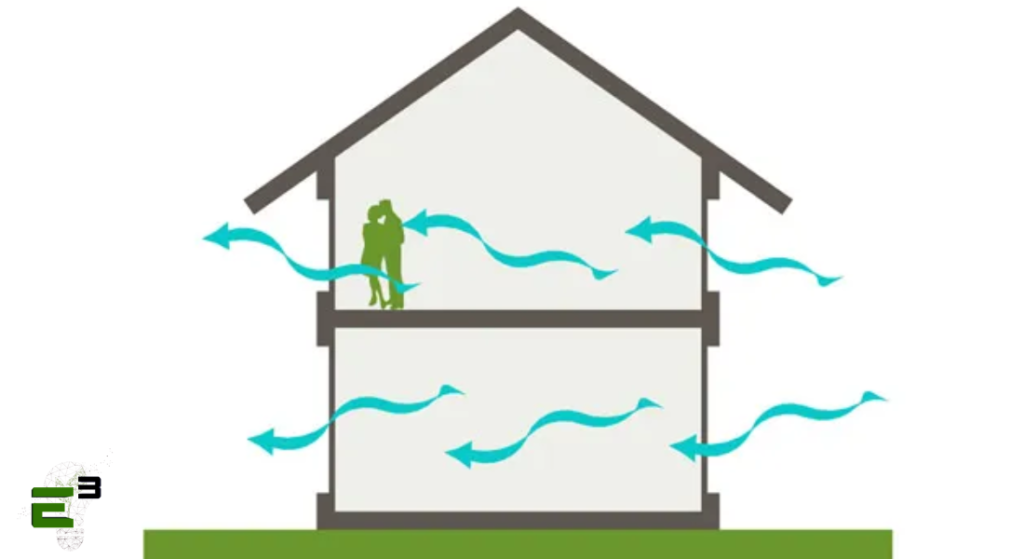In a global context where concerns about sustainability and energy efficiency are increasingly pressing, passive cooling strategies emerge as a truly promising solution for the construction industry. Unlike conventional air conditioning systems, notorious for their high energy consumption, passive cooling stands out by employing techniques that leverage surrounding natural resources to adjust the internal temperature of buildings. In this scenario, the pursuit of alternatives that reduce the environmental footprint of constructions and minimize resource waste becomes an undeniable priority. Faced with this panorama, exploring and implementing passive cooling strategies not only represent a step towards sustainability but also an investment in long-term energy efficiency. It is in this context of environmental awareness and the search for innovative solutions that passive cooling techniques emerge as a viable and responsible response to contemporary challenges in sustainable construction.

Exploring Passive Cooling Techniques
Efficient Thermal Insulation
Investing in effective thermal insulation is essential to mitigate heat transfer between the interior and exterior of buildings. High-quality insulating materials play a crucial role in stabilizing internal temperatures, minimizing reliance on artificial cooling systems. By ensuring an efficient barrier against external heat entry and internal heat loss, thermal insulation not only promotes a more comfortable environment for occupants but also results in significant long-term energy savings. This approach not only contributes to the sustainability of the building but also demonstrates a commitment to energy efficiency and user well-being.
Cross-Ventilation and Passive Ventilation
The technique of cross-ventilation and passive ventilation is based on the strategic use of openings and natural vents to stimulate the circulation of fresh air within the building. This method not only facilitates the dissipation of retained heat but also enhances indoor air quality, resulting in a healthier and more pleasant environment for occupants. By allowing external air to be channeled in a controlled manner through the interior space, cross-ventilation and passive ventilation not only reduce the need for air conditioning systems but also promote a more harmonious connection between the building and its natural surroundings. This sustainable approach not only contributes to the energy efficiency of the building but also emphasizes a commitment to user well-being and environmental preservation.
Utilization of Thermal Inertia Elements
The utilization of thermal inertia elements, such as thermal mass walls, concrete floors, and slab ceilings, plays a fundamental role in regulating the internal temperature of buildings throughout the day. These elements possess the unique ability to gradually store and release heat, significantly contributing to stabilizing the thermal conditions of the environment. This technique proves particularly effective in regions with pronounced temperature variations between day and night. By absorbing heat during the day and releasing it slowly during the night, these elements help maintain a more comfortable and stable internal environment, thus reducing the need for additional cooling or heating resources. Thus, the intelligent use of thermal inertia elements not only optimizes the energy efficiency of buildings but also provides a more pleasant and sustainable indoor environment for their occupants.
Benefits of This Strategy
Passive cooling strategies offer a range of significant benefits, starting with the reduction of energy costs. By decreasing reliance on air conditioning systems, these strategies result in substantial energy savings, translating into reduced long-term operational expenses. This approach not only alleviates pressure on building budgets but also contributes to overall energy efficiency.
Moreover, the adoption of passive cooling techniques plays a crucial role in promoting environmental sustainability. By reducing energy consumption from non-renewable sources, these strategies help decrease greenhouse gas emissions, thus contributing to mitigating the impacts of climate change. This commitment to sustainability not only benefits the environment but also fosters a healthier and more livable environment for future generations.
Another relevant aspect is the enhanced thermal comfort provided by passive cooling. In addition to saving energy and reducing environmental impacts, this approach translates into more pleasant and healthy indoor environments for occupants. By creating spaces where temperature is naturally regulated and the air is fresh and clean, passive cooling strategies significantly improve the quality of life within buildings, ensuring the well-being and comfort of their users.
Innovating with Nature: Green Roofs and Vertical Gardens
The adoption of green roofs and vertical gardens not only adds aesthetic appeal to buildings but also provides practical and functional benefits. These structures play a crucial role in reducing ambient temperature through plant evapotranspiration, resulting in the creation of cooler microclimates around the building. This combination of natural elements not only contributes to a more pleasant and healthy environment for occupants but also helps reduce the demand for artificial cooling systems, thus promoting energy efficiency and building sustainability.
Passive cooling strategies represent an innovative and sustainable approach to the design and operation of buildings.
By exploring techniques that leverage available natural resources, it’s possible to reduce energy costs, promote environmental sustainability, and create more comfortable and healthy indoor environments. Investing in passive cooling not only benefits building owners but also plays a crucial role in building a more sustainable future for future generations. This approach not only improves the energy efficiency of buildings but also contributes to environmental preservation and the well-being of occupants, standing out as a responsible and progressive choice in contemporary architecture.
As a company dedicated to promoting energy efficiency, we offer complimentary energy audits aimed at enhancing the efficiency of your household. This enables you to not only save on costs and resources but also play a part in preserving the environment. If you reside in New York, it’s worth noting that the government offers various incentives to help you make your home more energy efficient. These incentives include tax refunds, discounts, and financing options through initiatives like Clean Heat, Comfort Home, and GJGNY Financing. These programs aim to support residents in upgrading their homes to be more environmentally friendly and cost-effective in terms of energy consumption. We’re here to support you in navigating these opportunities by verifying your eligibility and assisting with the application process if you qualify. By taking proactive steps, we can collectively work towards a more sustainable and cost-effective future.



